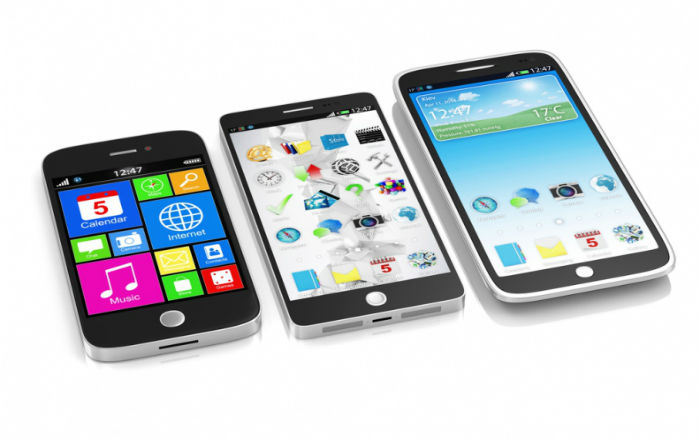Learning Design Strategies for Creating an Engaging mLearning Course

According to Horizon Report, 2011, by 2015, about 80% of people will be accessing the Internet from mobile devices only, with the main focus on education. The phenomenal growth in the number of the users of “mobile internet” is compelling companies to develop and deliver online courses that can be accessed effectively on mobile devices. But, how can organizations make engaging and interactive mobile learning (mLearning) courses? Well, the learning design strategy for the mobile can be approached under the following 7 heads.
- Instructional Design Strategy
- Visual Design Strategy
- Audio Strategy
- Multimedia Strategy
- Assessments Strategy
- Technical Strategy
- Authoring Tools
We will now look at each of these strategies, in detail.
Instructional Design Strategy
An effective instructional design strategy is the heart of a good mLearning course. The instructional design strategy for the mobile comprises of 3 components – understanding the target audience, determination of the training needs and analysis of the learning content. Let us now see the importance of each.
Understanding the target audience
It is important to remember that mLearning may not be relevant to all in the company. For example, employees who spend most of their time at their desk such as members of the administrative staff may not find mLearning very useful. But, field personnel such as sales people and service technicians may find mLearning ideal, as they are constantly on the move and seldom have time to attend classroom training sessions. M-learning can be used to impart knowledge of the latest products to these people. Therefore, it is very important to analyze your learners before embarking on an mLearning initiative.
Determination of the training needs
After identifying the ideal audience for your mLearning course, it is time to comprehend their learning requirements. You need to finalize what they need to learn, understand their time constraints and determine the learning outcomes. You need to remember that mLearning has limitations and is not a substitute to other training media.
Analysis of the learning content
Once the training needs are finalized, you need to analyze the learning content to present it effectively on mobile devices. M-learning can:
- Aid classroom training
- Be a part of delivery of online training through multiple devices
- Provide performance support
- Enhance personnel knowledge and skills
- Be used to assess learners
Based on how you intend to use mLearning, you need to create compact learning modules from the available classroom training or eLearning content.
After performing the content analysis, you need to determine what portion of the content needs to be delivered through mLearning and evolve a learning strategy, based on your requirement.
We will now see how to get the visual design strategy right for your mLearning course. They are some other factors to be considered for converting eLearning content to mLearning course.
Visual Design Strategy
It is well-said that a picture is worth a thousand words. Effective use of visuals goes a long way in enhancing the efficacy of your mLearning course. You need to keep the following aspects in mind while formulating the visual design strategy for your mLearning course.
- The way learners use mobile devices:Often, learners use mobile devices with one hand and use the thumb to navigate through the courses. They may also access the courses standing in a moving bus or a train. It is important that this aspect is kept in mind while choosing the visuals.
- Varied size of the screens:It is essential to remember that there is huge diversity in the size of the screens of mobile devices. You need to make sure that the visuals are properly rendered on all screens of all sizes.
- Adaptability to touch screens:Modern mobile devices come with “touch interfaces” that allow learners to touch, swipe, pinch and zoom to interact with the content. This interface needs to be taken into consideration while formulating the visual design strategy for your mLearning course.
- Viewing horizontally and vertically:Most mobile devices have the auto-rotation feature, which means that they can view the content vertically or horizontally. You need to factor this when you use visuals.
- Availability of bandwidth:You need to choose visuals depending on the bandwidth available to the learner. Animated and large images load slowly, when the bandwidth is less, and this may cause learner frustration.
Considering these factors, it is advisable to:
- Use simple and intuitive GUI with minimum number of elements
- Go in with Miller’s magical number, i.e., 7+/-2. Ensure that a mobile course has 7 screens for a particular topic and 7 topics to make up a module. (Miller, 1956)
- Avoid complex graphics and images that do not fit properly into the small screens of mobile devices. It is also better to avoid background patterns and scrolling of text.
- Make use of icons only when users can clearly recognize them
Audio Strategy
It is important to consider the end-users and the environment in which they access the mLearning course, in order to make the best use of audio. For example, if your people access the course in noisy conditions, such as a shop floor, then having audio may not be of much use. Audio can be used effectively when personnel access the course during their downtime and multi-tasking is feasible. Audio is also helpful to motivate learners with a friendly and conversational tone.
You need to consider the following while using audio in mLearning courses
- Audio only plays a supportive role and is not necessary
- Sound effects need to be used only when they add value to your course.
- Background music can distract the learner and may slow down the course.
- File size has to be limited, so that the course can be accessed without any hassles.
- Audio from flash objects will have to be recreated to make them mobile compatible.
Let us now see how to harness the power of multimedia in your mLearning course.
Multimedia Strategy
Proper use of multimedia in mLearning courses plays a key role in enhancing their effectiveness. Interactive multimedia elements such as videos, animations or games attract the attention of users and hence can be used in mLearning modules. It is advisable to keep these aspects in mind while using multimedia in mLearning courses.
- Keep animations short
- Use file formats that load faster and are compatible to most mobile devices.
- Animations need to be consistent and simple for creating good learner experiences.
- Chunk animations from eLearning courses, so that only the essential information is retained.
- Avoid the need for constant streaming.
- Ensure that the structure and layout of eBooks are finalized after considering the limitations of mobile screens.
We will now look at how to create effective assessments for mLearning courses.
Assessment Strategy
It is well-known that assessments form an integral part of a training strategy. Assessments in mLearning courses can be in the form of games, quizzes, puzzles or tests. Here are a few guidelines for creating mLearning course assessments.
- Quizzes need to be short and provide immediate feedback to learners.
- Games used for assessing learners need to be designed keeping in mind the touch interactions of mobile platforms.
- It is better that games, quizzes, puzzles or tests reside on the mobile device, as they would be accessible even when the learner is offline.
- If you need to include any free writing fields, it should be limited to only 4 to 5 words.
We will now look at some of the technical aspects of creating mLearning courses.
Technical Strategy
Efficient use of technology helps create effective mLearning courses. Two major technologies need to be specially mentioned when we talk of mLearning – HTML5 and responsive design (RD). Let us look at them in detail.
HTML5
HTML stands for Hyper Text Markup Language and is used to create web pages. Courses published to HTML5 format can be accessed on all mobile devices irrespective of their screen-size and platform. Moreover, courses can be easily tracked and evaluated easily on the Learning Management System (LMS) when used with HTML5 output. Therefore, it is preferable to have mLearning output in HTML5.
Responsive Design
Responsive eLearning design refers to the design of online courses whose content automatically adjusts to the different screen sizes of various devices, thereby providing excellent learning experiences. For more on using responsive design in online training, refer to the article Responsive E-learning: Making sense of it!
Another important technology that is useful in delivering training through mobile devices is mobile apps. Let us see more about mobile apps.
Mobile Apps
Mobile apps are software applications which can be used to provide information on mobile devices. They are of two types – native apps and web apps. There is also a new type of mobile apps, which is increasingly being used, called hybrid apps which is compatible across platforms and also have access to the device’s hardware. These apps have the advantages of web apps and native apps as well as their disadvantages.
We will now see various tools used to develop mLearning courses.
Authoring Tools for M-learning
The selection of the right authoring tool plays a critical role in the development of effective mLearning courses. We will look at 3 tools – Lectora Inspire, Adobe Captivate 8 and Articulate Storyline.
Lectora Inspire
Lectora is one of the first tools to facilitate the development of mLearning courses. It comes with inbuilt templates and enables you to modify the color scheme as per your requirement. Lectora allows maximum customization with respect to interactivities, templates, or quizzes. If your course is text-heavy, this tool is ideal to handle it. If you need your courses to be translated into multiple languages, you can do so with Lectora quite easily.
Adobe Captivate 8
Captivate 8 is ideal for developing courses for the mobile. It has a wide variety of themes, which make the development of responsive online courses simple. You need to create a base version of the course for the desktop computer and it will be automatically updated on mobile devices such as iPads, tablets and smart-phones.
Articulate Storyline
This is a wonderful tool to develop mLearning courses. It can be used to publish courses to HTML5 as well as to Articulate Mobile Player (AMP), a native iOS app. The AMP provides excellent viewing experiences on iPad. It has touch savvy interactions, quizzes or puzzles that are compatible with tablets and smart-phones.
It is recommended that you understand your organizational needs in depth before choosing an authoring tool for developing mobile learning courses.
If you have multiple requirements, there is no harm in using multiple authoring tools. You can still give the user a standard look and experience by standardizing your templates and style guides irrespective of the tool.
You need to come up with the right instructional and visual design strategy for your mLearning course. Proper use of audio and multimedia enhances the efficacy of the course. You also need to come up with efficient assessment and technical strategies. Last but not the least, the choice of the right authoring tool goes a long way in the development of an effective mLearning course.
Hope you find this article informative. How do you create mLearning courses? We’d love to hear your views.





